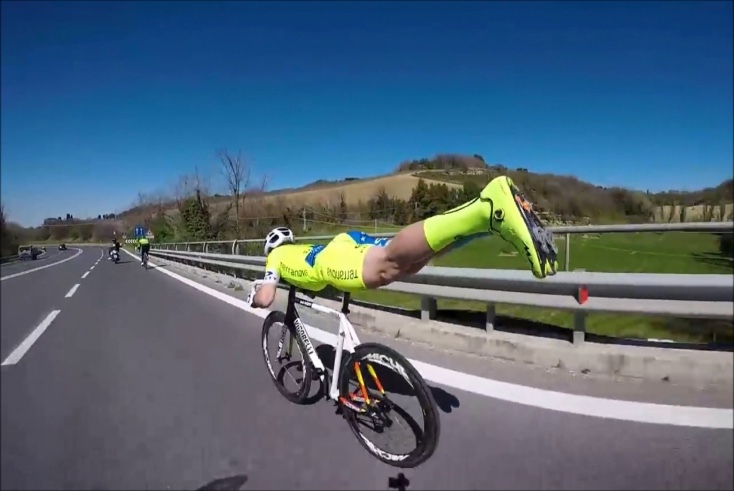The efficiency trap

Pictured: Michael Guerra/ Source: YouTube
Efficiency briefs are trapping brands into a downward spiral, writes Zenith’s group strategy director, Barry Ferguson
You might be surprised to hear that the tenure of most chief marketing officers is now shorter than a university degree.
CMOs are therefore under pressure to deliver results quickly, and that means that communication briefs are often designed to extract value from the existing equity of a brand, in the short term.
At Zenith, we have observed that this approach for quick, visible results often affects the briefing process. The trend is for efficiency briefs: “Can you do what you did last year, but incorporate all of our learnings, and do it a little bit cheaper please?”
If the plan can achieve the same (or more) for less, then that equates to success, validation and justification for longer CMO tenures.
But in our opinion, this approach will only quicken the cycle of pressure, and can often be short-sighted – especially if ‘the efficiency brief’ has been in effect for a number of years.
Brands can be trapped into a downward spiral – or “be optimised into a sub-optimal position”, as my old boss used to say.
It is often perceived that the ying to the yang of ‘efficiency’ is ‘effectiveness’ – you aim for one, or the other. However, in our experience the two are not mutually exclusive and they can exist in harmony…But you do need a brave (and trusting) marketing department to achieve it.
A quick analogy
Allow me to digress.
When explaining ‘insights’ (and, more importantly, ‘the power of great insights to drive effective campaigning’) to more junior planners, I’m prone to turn to the world of sports for analogies that are simple to understand. In cycling, for example, I love the insight that Michael Guerra (Google him) first had in 2016…

…which was that for literally hundreds of years, racing cyclists had not noticed the significance of their legs being vertical to the wind when descending from hill climbs.
Like all of the best insights the revelation is surprising, yet obvious.
Remove the ‘wall of the legs’ and you will travel faster. His thought process of, “how can I minimise all wind resistance when descending”, logically concludes with becoming “cycling’s superman”.
Why am I telling you this? Because the efficient version of this story had stopped offering any marginal gain. It was only by turning to effectiveness that Michael was able to progress.
In pursuit of ‘efficiency gains’, all of the top cyclists had:
· The best lycra
· The lightest possible bike
· Trained to produce the best ‘power to weight ratio’
· Optimal diets, and training regimes
· Optimal mental and physical training
· Etc.
All of the cyclists had the same ‘efficiency tools’, and so weren’t gaining any incremental advantage.
The analogy is that in cycling, ‘the efficiency approach’ had been “optimised into a sub-optimal position”. So, the best way to seek advantage was to look to the new.
If you aim for effectiveness first, then layer efficiency second, by throwing everything up in the air and looking afresh for new insights, you may land on a winner that offers significant marginal gains with a sufficiently different look at the situation verses your competitors.
All of the best, most famous, and award winning work aims for effectiveness first
When you read award papers that make you smile with appreciation and make you wish you had been a part of, it is usually due to a new look at an old problem. They find the insight that nobody else saw; the insight that was hidden in plain sight.
Like Persil’s genius ‘Dirt is Good’ campaign, where the insight that children’s playtime outside had been eroded by their increasing adoption of technology inside (surprising, yet obvious), thus impeding their cognitive development (it literally stagnated their developing pre-frontal cortex), led to the beautifully simple but counter intuitive idea that Persil could own the territory that ‘Dirt is Good’.
Or the fabulous ‘Like a Girl’ campaign from Always, which correctly uncovered the insight that ‘as we age we lose our innocence; we become conditioned’. (Surprising, yet obvious). This allowed Always a platform to expose the juxtaposition between the attitudes about what it means to be female from the standpoint of pre-pubescent and post-pubescent women.
And lastly, Zenith’s own Tena campaign, which broke the taboo about incontinence. The insight that you can’t normalise a taboo by using private, performance driven, 1 to 1 media. You have be bold and go loud and proud into very public media, challenging ideas about femininity and incontinence.
Effectiveness first means insight first
The common riposte to this endeavour for insight first is the rather frustrating point of view:
“…but I work on XXXXX (insert your category here), and there are no new insights.”
To which I say this is usually simply not true.
Over time (and this is now becoming less and less time due to the accelerated pace of change in society) there are significant changes to:
1. Your brand
2. The category
3. The influence of culture
4. Media choices
5. Technology
6. Consumer behaviour
Inspection of any one of these could elicit a new response.
So here’s the rub. The insight that will allow you to ‘aim for effectiveness’ is very unlikely to make it into the brief. And it certainly won’t be in the brief that reads from the efficiency bible.
So I believe it is incumbent on all of us to work with the client to help them understand that the brief needs to be iterative and open. Try to avoid the efficiency trap and find the insight that will lead to step change growth. Like Persil, Always and Tena did.
Find that spark and the CMO is sure to be happy. And who knows – they may then stay in their job longer than it takes to get a university degree.
Barry Ferguson is group strategy director at Zenith




